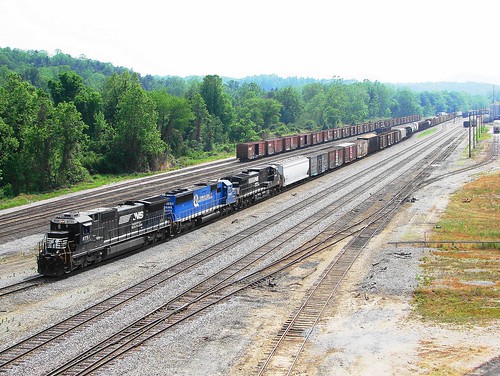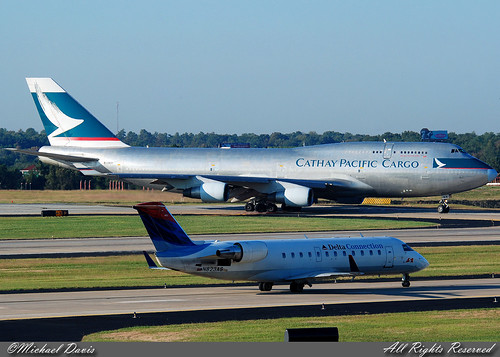U.S.DOT’s Bureau of Transportation Statistics Releases Report on America’s Container Ports
The Bureau of Transportation Statistics of the Research and Innovative Technology Administration today released “America’s Container Ports: Freight Hubs That Connect Our Nation to Global Markets”, an overview of the movement of maritime freight handled by the nation’s container seaports in 2008 and trends in maritime freight movement since 1995. The report covers the impact of the recent U.S. and global economic downturn on U.S. port container traffic, trends in container throughput, concentration of containerized cargo at the top U.S. ports, regional shifts in cargo handled, vessel calls and capacity in ports, the rankings of U.S. ports among the world’s top ports, and the number of maritime container entries into the United States relative to truck and rail containers.
The U.S. marine transportation system continues to handle large volumes of domestic and international freight in support of the nation’s economic activities. The demand for freight transportation responds to trends in global economic activity and merchandise trade. When U.S. businesses produce more goods, the demand for freight transportation services to move raw materials and finished products to markets and customers around the country and world will increase. When economic conditions result in less production, the demand for transportation services will decrease.
This report provides an overview of the movement of maritime freight handled by the nation’s container seaports in 2008 and summarizes trends in maritime freight movement since 1995. It covers the impact of the recent U.S. and global economic downturn on U.S. port container traffic, trends in container throughput, concentration of containerized cargo at the top U.S. ports, regional shifts in cargo handled, vessel calls and capacity in ports, the rankings of U.S. ports among the world’s top ports, and the number of maritime container entries into the United States relative to truck and rail containers. The report also presents snapshots of landside access to container ports, port security initiatives, and ongoing maritime environmental issues.
The principal findings of the report include the following:
- Maritime freight handled by U.S. container ports fell sharply towards the end of 2008, and the decline continued into the first quarter of 2009. Total U.S. containerized cargo for December 2008 was down 18 percent compared with December 2007. The decline was severe at the nation’s two leading container ports, Los Angeles and Long Beach, which experienced 13 and 25 percent drops, respectively.
- Overall in 2008, U.S. container ports handled 28.2 million loaded TEUs (20-foot equivalent units—a measure for counting containers), a 3 percent drop from the 29 million TEUs handled in 2007.
- In 2008, containerized freight throughput fell for each of the leading ports in the Pacific/west coast, Atlantic/east coast, and gulf coast regions. West coast ports had a 5 percent decline, east coast ports a less than 1 percent decline, and gulf coast ports a 3 percent decline.
- The consequences of the 2008 decline in container throughput at the nation’s seaports reached beyond the marine ports and terminals, affecting containership fleet capacity, the railroads and commercial trucks that service the seaports, and the inland warehouses and distribution centers that provide logistical support for the entire multimodal freight supply chain.
- In 2008, the decline in maritime containerized cargo impacted international intermodal containers handled by the nation’s Class I railroads, which fell 7 percent from 2007. It also affected overall trucking activity, which saw record declines in the second half of 2008.
- Despite the 2007 to 2008 declines, today 1 container in every 10 that is engaged in global trade is either bound for or originates in the United States, accounting for 10 percent of worldwide container traffic.
- On a typical day in 2008, U.S. container ports handled an average of 77,000 TEUs, up from 37,000 TEUs per day in 1995.
- In 2008, the top 10 U.S. container ports accounted for 86 percent of containerized TEU imports and exports, up from 78 percent in 1995.
- In 2008, 3 U.S. ports—Los Angeles, Long Beach, and New York/New Jersey—ranked among the world’s top 20 container ports when measured by TEUs, placing 16th, 17th, and 20th, respectively.
- In 2007, there were nearly 20,000 containership calls at U.S. seaports, accounting for 31 percent of the total oceangoing vessel calls made by all vessel types at U.S. ports.
- In 2007, there were about 12 million oceanborne container entries into the United States, down slightly from 2006 but still double those of 2000.
- In April 2009, a U.S.-flagged container vessel with 20 American sailors was hijacked by pirates off the coast of Somalia, highlighting the challenge of fully securing maritime cargo throughout the entire global logistics supply chain.
The report can be found at:
http://www.bts.gov/publications/americas_container_ports/2009/













